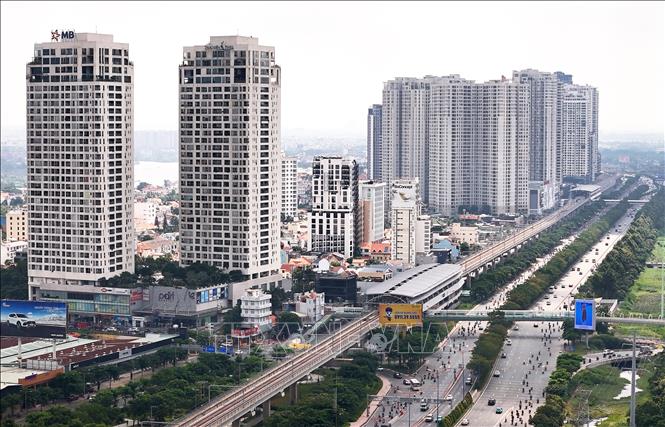
This is not simply a reform of boundaries, but also opens up strategic opportunities to form large-scale economic zones, creating a strong "push" for both residential and industrial real estate.
According to Vietcombank Securities Company Limited (VCBS), the merger of provinces and cities will bring about clear positive effects in the long term. Specifically, the expanded economic scale along with a streamlined management apparatus and a more centralized budget will help the merged provinces to be more proactive in planning, developing infrastructure and orienting key economic sectors.
Many provinces and cities after the merger will simultaneously possess sea, plains, and mountains - creating ideal conditions for comprehensive development from trade, industry to tourism .
Typically, the merger of Ho Chi Minh City with Binh Duong and Ba Ria - Vung Tau will create a dynamic economic region in the South, with the combined strength of urban - industry - logistics - tourism.
In the North, the merger of Ha Nam - Nam Dinh - Ninh Binh will become a new development pole with three pillars: Industry - Tourism - Urban. Meanwhile, Da Nang - Quang Nam will expand the development space for the central urban area of Da Nang, taking advantage of special mechanisms and the ability to form a Free Trade Zone.
Immediately after information about the merger plan was announced, the real estate market in many areas recorded excitement, especially in the land segment, a type sensitive to investment and speculation expectations.
However, according to VCBS, this wave quickly cooled down in some localities, showing that investors have become more cautious and no longer follow short-term expectations emotionally.
In the long term, real estate values will only truly improve when infrastructure, utilities, residential needs and economic activities develop synchronously. VCBS notes that differentiation is inevitable: Not all provinces after the merger will benefit equally, but it also depends on their inherent potential, budget coordination ability and infrastructure deployment speed.
Notably, provinces with weaker foundations will often benefit more from the consolidation trend, thanks to access to larger budget sources, investment capital flows and management experience from stronger provinces.
Meanwhile, with provinces having equal potential, the area chosen as the administrative center will be the priority for investment - creating a clear advantage in real estate.
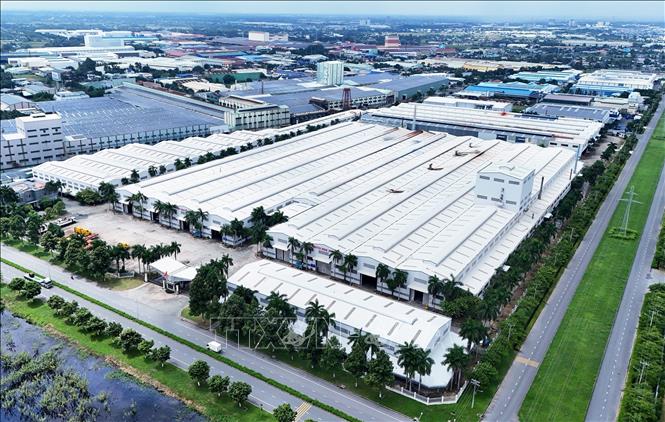
Not only the housing market, industrial real estate is a sector that clearly benefits from this policy. According to VCBS, after the merger, the industrial park index will be calculated for the entire region, helping to create flexible space for expanding or restructuring industrial parks according to actual needs. This is especially meaningful for localities that attract strong foreign direct investment (FDI) such as Ho Chi Minh City or Binh Duong - where international investors always require consistency, transparency and good infrastructure.
One highlight is the possibility of forming megacities and industrial zones. Firstly, when there is no longer competition to attract FDI between neighboring provinces, industrial development planning will be synchronized and avoid overlap. Secondly, consolidation helps improve infrastructure coordination, especially connecting traffic, logistics and seaports - key factors in modern supply chains.
Mr. Thomas Rooney, Deputy Director of Savills Hanoi Industrial Consulting Department, assessed that the merger, if accompanied by synchronous investment in inter-regional infrastructure systems such as belt roads, seaports, airports and digital infrastructure, will help industrial parks escape the limits of administrative boundaries.
According to Mr. Thomas Rooney, this will facilitate businesses to access a wider workforce, optimize operating costs and promote the trend of moving away from traditional industrial markets which are limited by land funds and high investment costs.
According to Mr. Thomas Rooney, new localities with abundant, cheap land and improved infrastructure will have the opportunity to become new industrial centers of the country. However, Mr. Thomas Rooney emphasized that the transition period - expected to last from two to three years - will be very important. Enterprises need to proactively access information, build relationships with the new government and flexibly adjust land use plans.
For regulators, the key is transparent communication, open dialogue and the establishment of appropriate support mechanisms, especially for small and medium-sized enterprises.
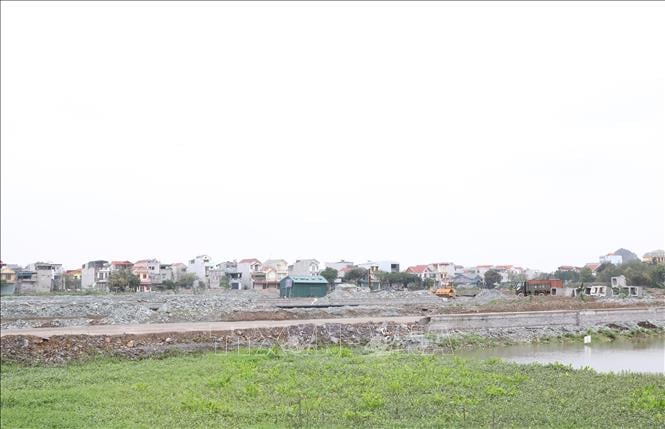
From a market perspective, Mr. Nguyen Quoc Anh, Deputy General Director of Batdongsan.com.vn, said that the administrative boundary arrangement plan has clearly impacted investor sentiment since the beginning of 2025. According to Mr. Nguyen Quoc Anh, expectations of infrastructure development, optimized management costs and regional connectivity policies will create new momentum for the real estate market in related localities.
“Investors need to avoid short-term "surfing" mentality, but should rely on data analysis, assessment of socio-economic development capacity and actual infrastructure to minimize risks,” Mr. Quoc Anh recommended.
According to the Vietnam Association of Realtors (VARS), information about the proposed arrangement of provinces and cities can boost liquidity in some localities, especially in areas with clear infrastructure planning. However, VARS also pointed out the phenomenon of "catching the market wave" emotionally by many investors, based on FOMO (fear of missing out) psychology rather than practical analysis.
In particular, the adjustment of land prices, along with the expectation of "obvious" price increases, has caused some areas to be pushed up in price compared to their real value. Meanwhile, experts emphasize that only areas with a foundation of synchronous development in infrastructure, planning and socio-economics have the potential for sustainable price increases.
The arrangement of administrative boundaries, if implemented systematically and linked to infrastructure development, will open up a new development space for Vietnamese real estate - both industrial and residential. However, opportunities always go hand in hand with risks. When the market is being "activated" by expectations, caution, data analysis and long-term vision are the "keys" for investors to not only anticipate trends, but also maintain sustainable growth.
Source: https://doanhnghiepvn.vn/kinh-te/kich-hoat-khong-gian-moi-cho-bat-dong-san/20250623091217878


![[Photo] Bustling Mid-Autumn Festival at the Museum of Ethnology](https://vphoto.vietnam.vn/thumb/1200x675/vietnam/resource/IMAGE/2025/10/4/da8d5927734d4ca58e3eced14bc435a3)







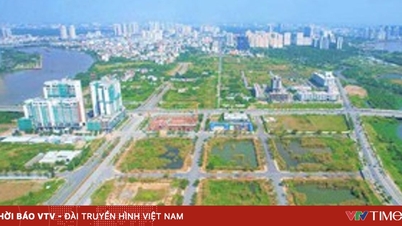

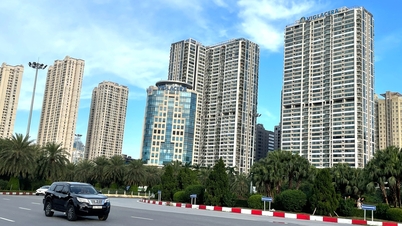

















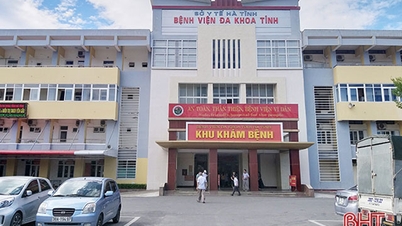






![[Photo] Solemn opening of the 8th Congress of the Central Public Security Party Committee, term 2025-2030](https://vphoto.vietnam.vn/thumb/1200x675/vietnam/resource/IMAGE/2025/10/4/f3b00fb779f44979809441a4dac5c7df)
![[Photo] General Secretary To Lam attends the 8th Congress of the Central Public Security Party Committee](https://vphoto.vietnam.vn/thumb/1200x675/vietnam/resource/IMAGE/2025/10/4/79fadf490f674dc483794f2d955f6045)


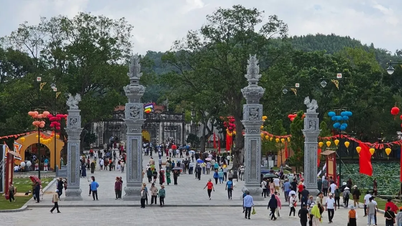





















![[VIDEO] Summary of Petrovietnam's 50th Anniversary Ceremony](https://vphoto.vietnam.vn/thumb/402x226/vietnam/resource/IMAGE/2025/10/4/abe133bdb8114793a16d4fe3e5bd0f12)

![[VIDEO] GENERAL SECRETARY TO LAM AWARDS PETROVIETNAM 8 GOLDEN WORDS: "PIONEER - EXCELLENT - SUSTAINABLE - GLOBAL"](https://vphoto.vietnam.vn/thumb/402x226/vietnam/resource/IMAGE/2025/7/23/c2fdb48863e846cfa9fb8e6ea9cf44e7)

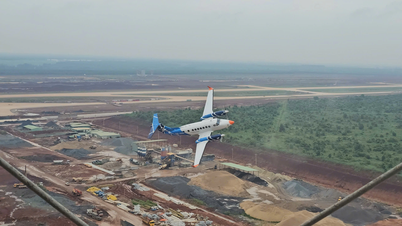




















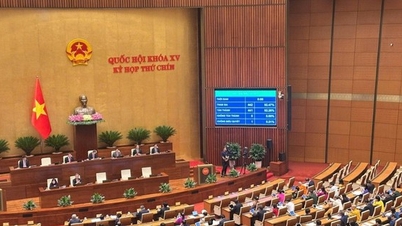










Comment (0)